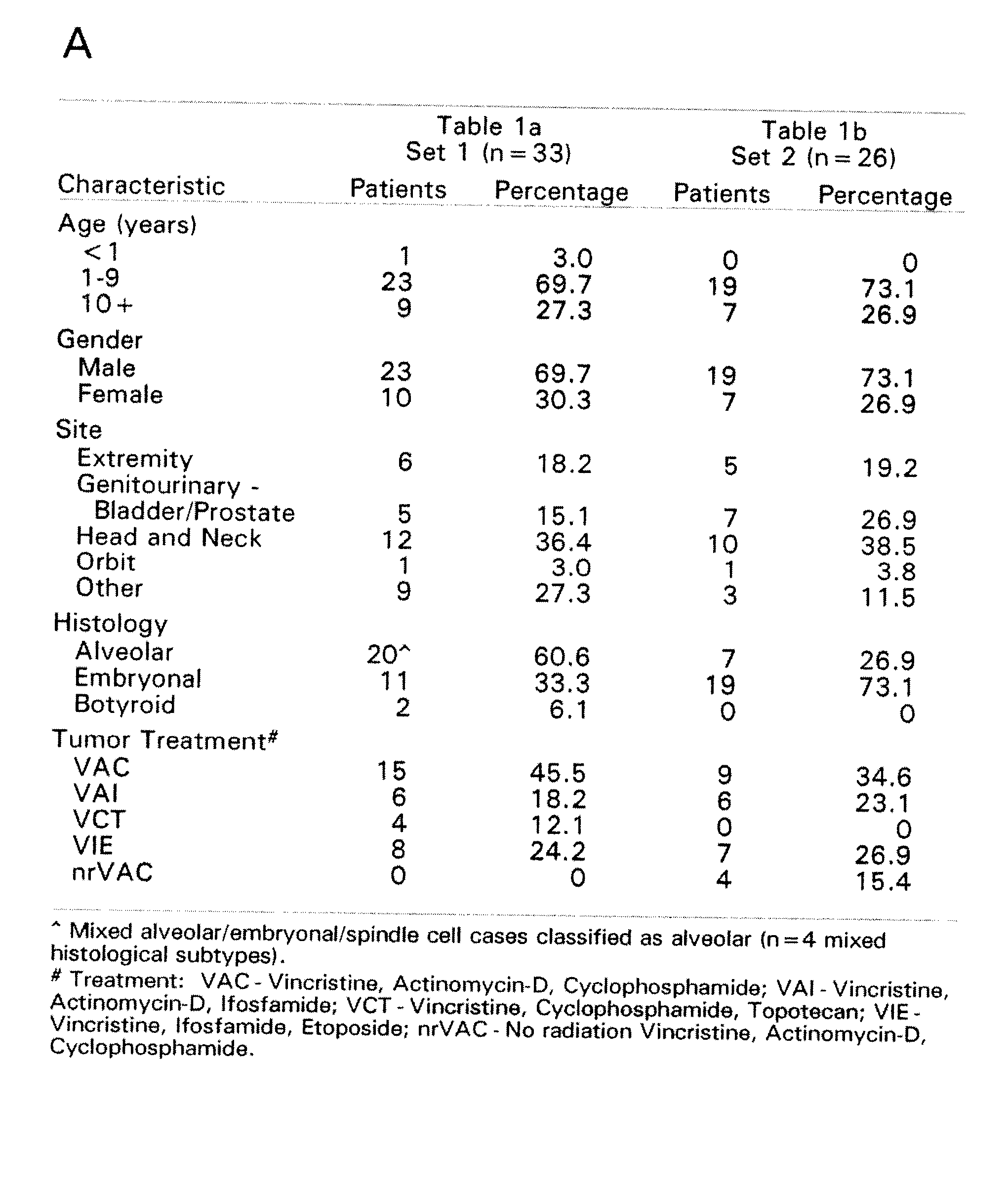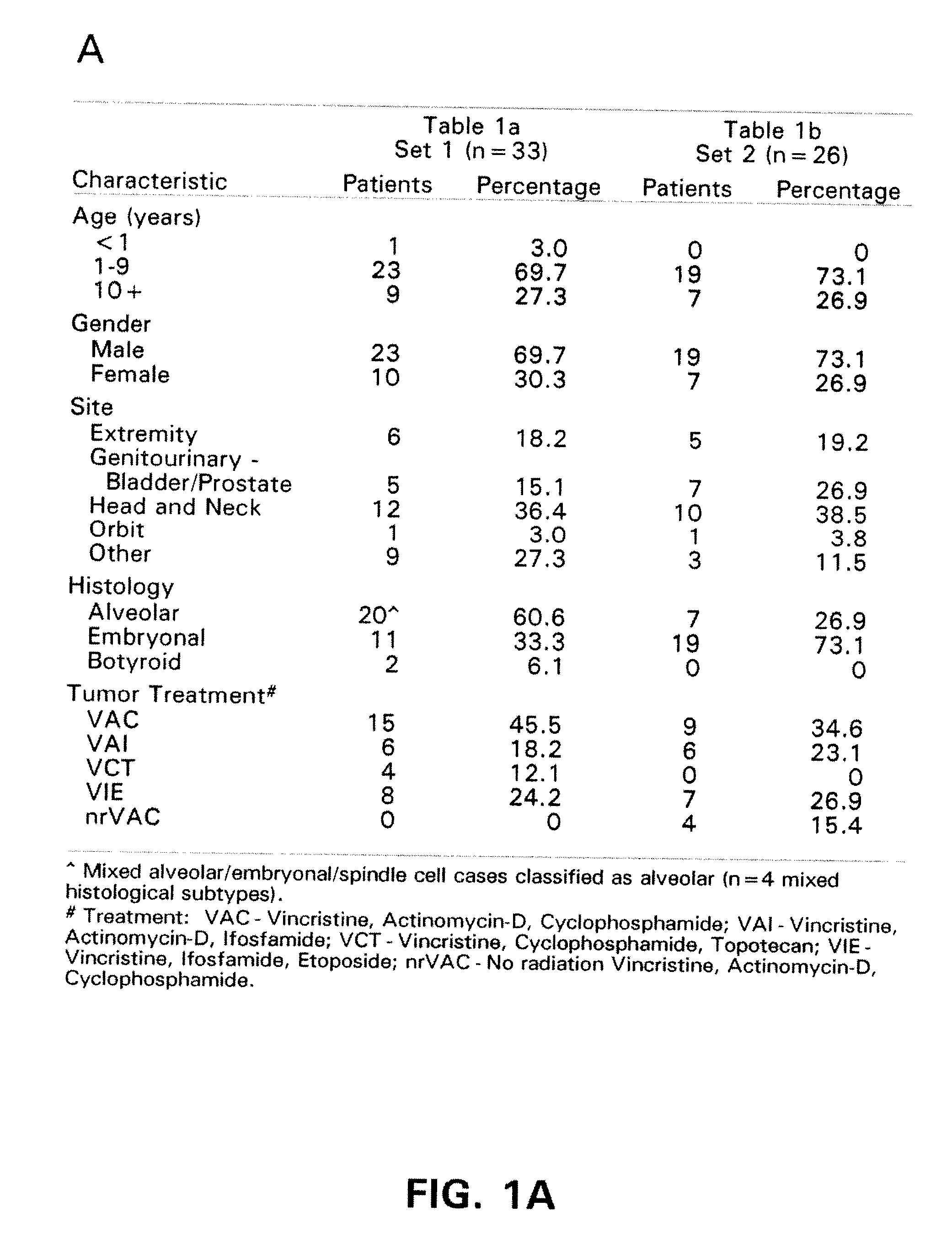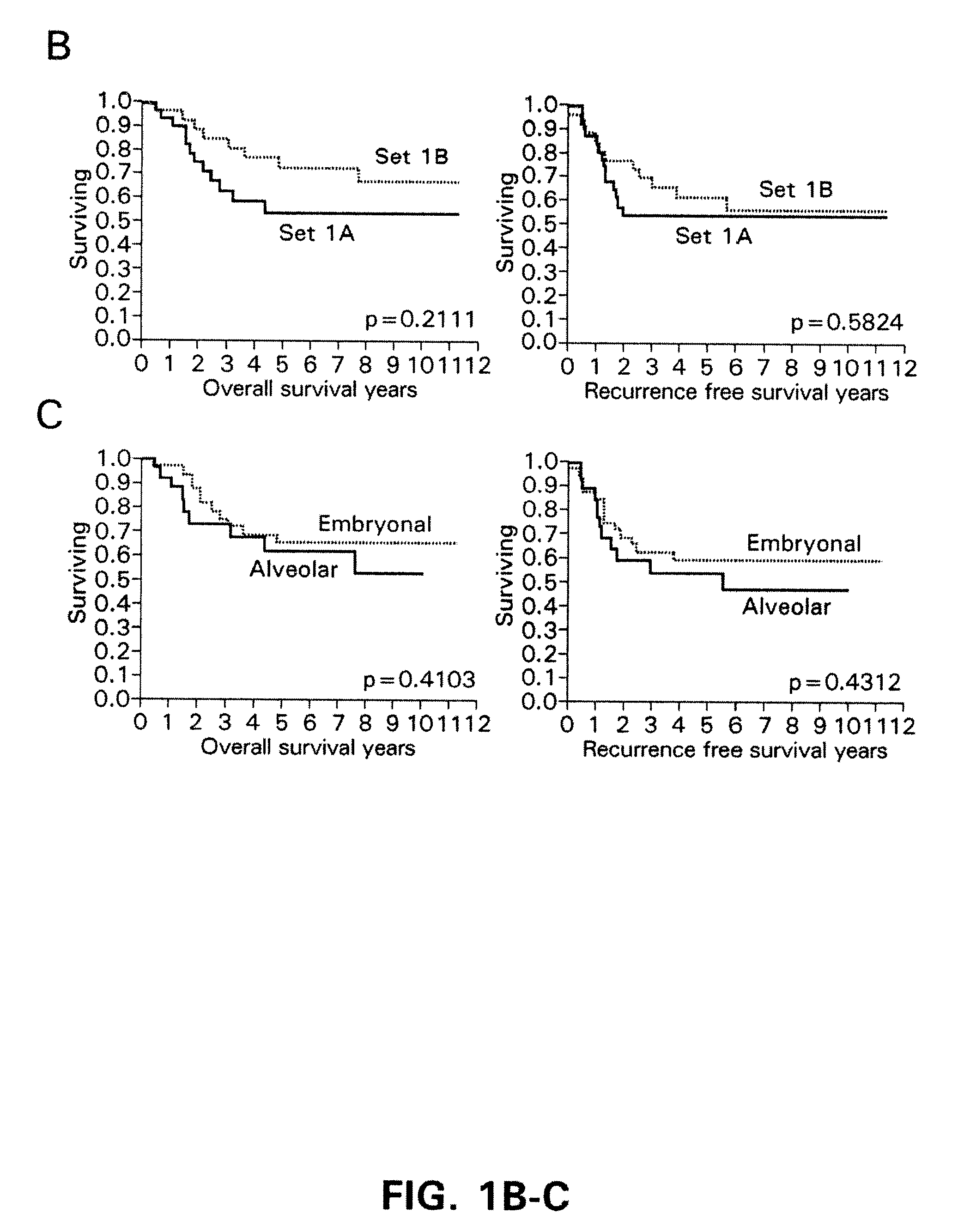Stat3 as a theranostic indicator
a theranosceptic indicator and stat3 technology, applied in the field of stat3 as a theranosceptic indicator, can solve the problems of complex analysis of the many genes in gene expression analysis and limited endpoints
- Summary
- Abstract
- Description
- Claims
- Application Information
AI Technical Summary
Problems solved by technology
Method used
Image
Examples
example i
Phosphoprotein Pathway Mapping: Akt / mTOR Activation is Negatively Associated with Childhood Rhabdomyosarcoma Survival
A. Introduction
[0173]Rhabdomyosarcoma (RMS) arises from undifferentiated mesenchymal cells bearing skeletal muscle features. RMS is the most common soft tissue sarcoma in children, consisting of three histological subtypes—alveolar, embryonal and botyroid. Despite the recent advances in combination chemotherapy, and the molecular knowledge of the translocations t(2;13)(q35;q14) and t(1;13)(p36;q14) in alveolar RMS, the overall survival of all patients with childhood rhabdomyosarcoma has remained in the range of 60-70%.
[0174]In several published studies on treatment regimens for RMS, the overall disease free survival rate was only 67%. Unfortunately, there is no way to identify the 33% of children destined to fail initial therapy, regardless of disease stage or histological subtype. On the other hand, the 60-70% of children that respond to standard therapy do so exceed...
example ii
Lung Cancer Phosphoproteomic Analysis using Reverse Phase Protein Microarays; the Importance of the mTOR Pathway in Determining Outcome in Non-Small Cell Lung Cancer, the Most Common form of Lung Cancer
A. Materials and Methods
[0200]1. Samples. Twenty early-stage lung adenocarcinoma surgical specimens. Lung surgical resections were collected from patients and frozen at the time of surgery. (Patient survival was confirmed by the National Death Index)
[0201]2. Frozen sections. 8 μm frozen tissue sections were prepared on silanized slides.
[0202]3. Laser Capture Microdissection (LCM). Pure tumor cell populations were procured using Molecular Devices' PixCell or Veritas instruments.
[0203]4. Reverse phase protein microarrays were printed with on Whatman Schleicher and Schuell FAST slides using Affymetrix GMS 417 pin and ring style arrayer (samples were printed in duplicates, at 10 hits per dot).
[0204]5. Immunostaining. Microarrays were probed for specific proteins on a Dako Autostainer usin...
example iii
Breast Cancer Phosphoproteomic Analysis using Reverse Phase Protein Microarays
[0207]In this Example, a study set of tumors taken from ER+ lymph node negative and lymph node positive breast cancer patients, with at least 10 years of follow up and all treated with tamoxifen monotherapy, were analyzed by molecular network analysis using reverse phase protein microarrays. Out of the 55 phosphoendpoints analyzed, the major principal components of outcome segregation belonged to the mTOR pathway. Importantly, the mTOR pathway components, pEBP1 mainly, and p70S6, could segregate outcome regardless of lymph node status.
[0208]FIG. 10 shows a product-link survival fit grouped by p4EB-P1; survival from LN-only subset. FIG. 11 shows shows a Partition Analysis of the LN+ populations showing p70S6 as a a principal component of segregation. FIG. 12 shows shows a survival plot from all cases, both LN− and LN+.
[0209]Conclusion: The data clearly support the conclusion that time to recurrence for wome...
PUM
| Property | Measurement | Unit |
|---|---|---|
| Level | aaaaa | aaaaa |
Abstract
Description
Claims
Application Information
 Login to View More
Login to View More - R&D
- Intellectual Property
- Life Sciences
- Materials
- Tech Scout
- Unparalleled Data Quality
- Higher Quality Content
- 60% Fewer Hallucinations
Browse by: Latest US Patents, China's latest patents, Technical Efficacy Thesaurus, Application Domain, Technology Topic, Popular Technical Reports.
© 2025 PatSnap. All rights reserved.Legal|Privacy policy|Modern Slavery Act Transparency Statement|Sitemap|About US| Contact US: help@patsnap.com



